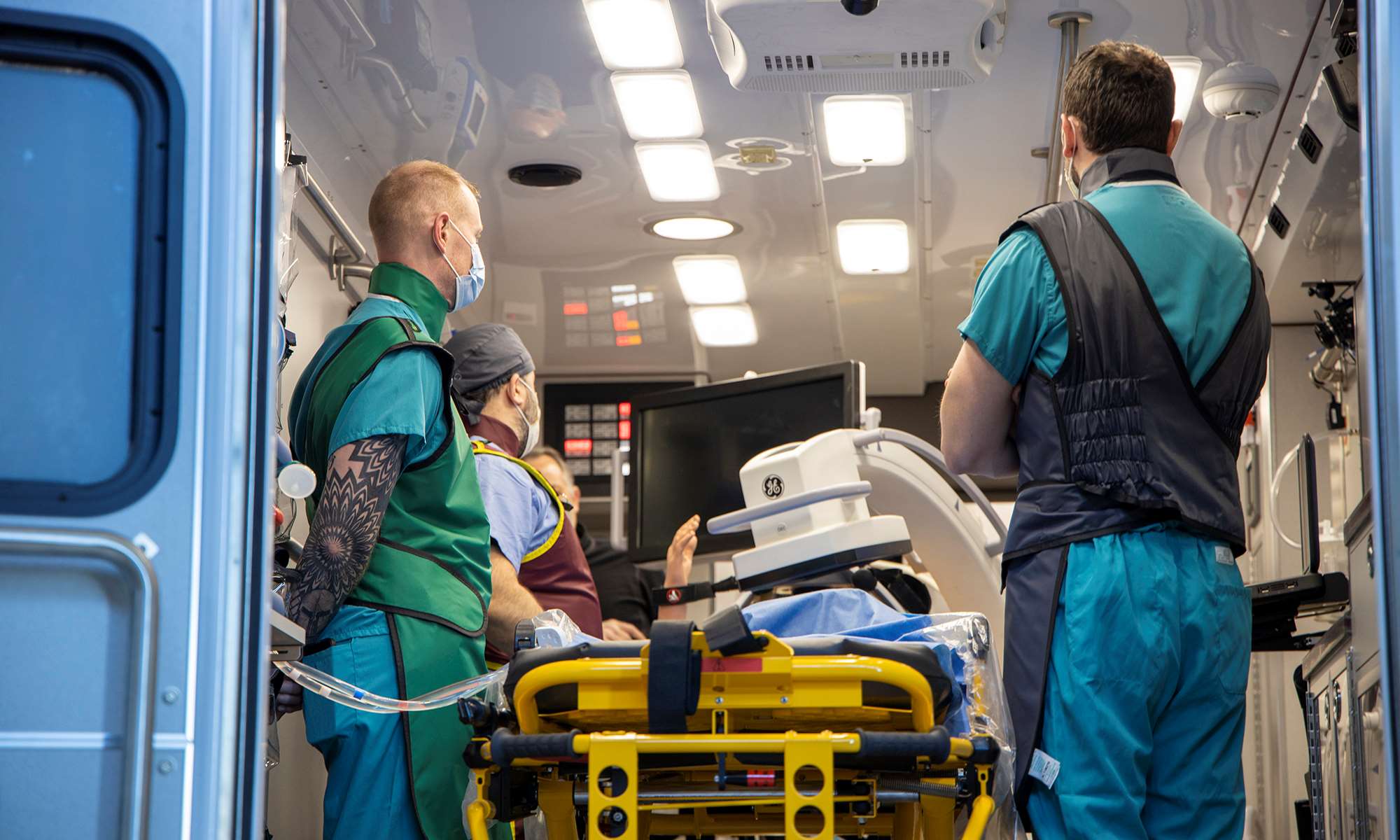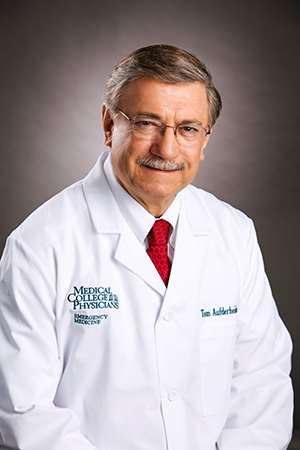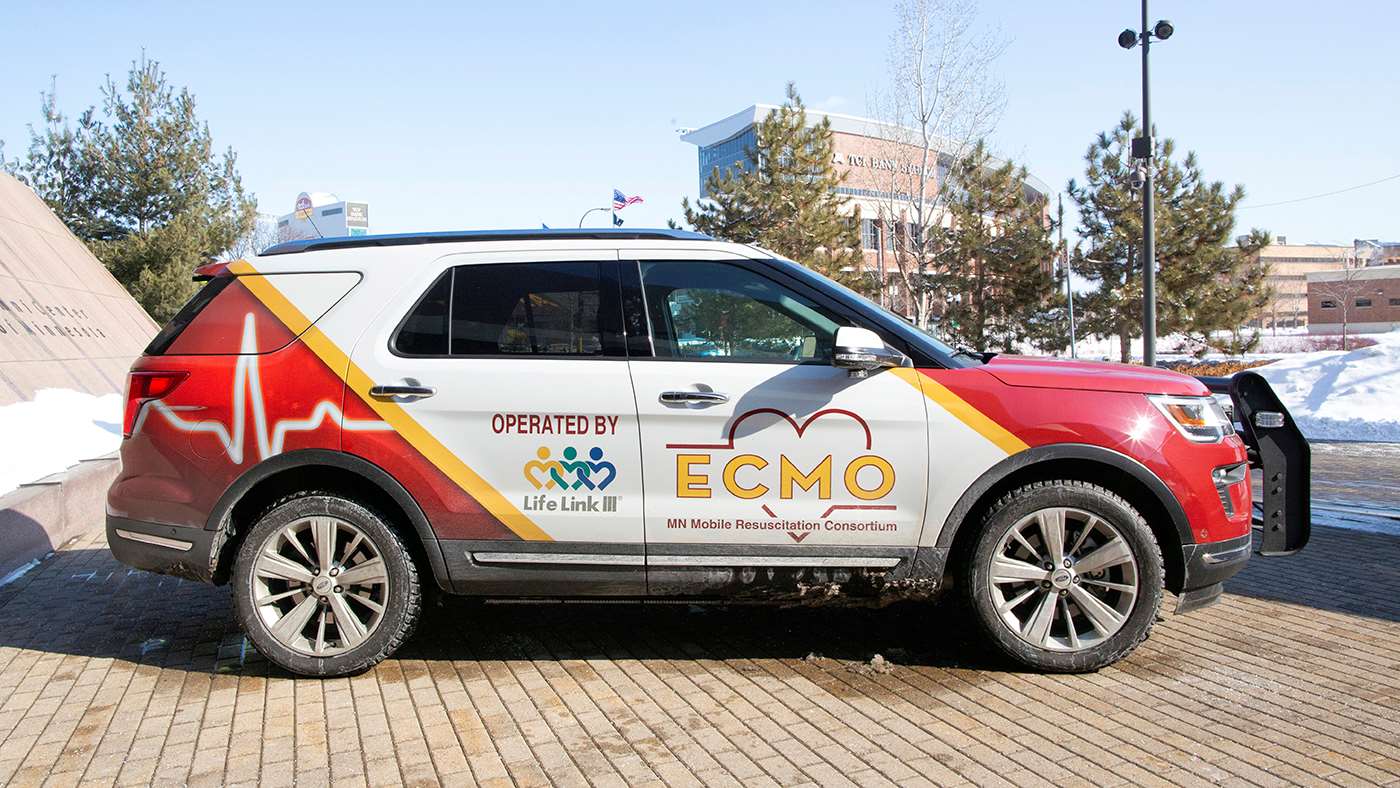When a Heart Stops

The first randomized clinical trial in the US using extracorporeal membrane oxygenation (ECMO) technology to facilitate resuscitation of cardiac arrest patients with severe coronary artery disease showed that starting ECMO as soon as possible is paramount to improving survival odds. (photo credit: University of Minnesota Medical School)
The last 50 years have been rife with improvements in cardiovascular treatments and chronic disease management that have enhanced quality of life while also producing dramatic reductions in deaths due to heart disease. These same positive trends, unfortunately, do not apply to an equal extent in the case of cardiac arrest, when the heart suddenly and unexpectedly stops beating. More than half of the approximately 660,000 cardiac arrests that occur in the US each year happen outside a hospital setting, requiring bystander cardiopulmonary resuscitation (CPR), automated external defibrillator (AED) use and a coordinated team of paramedics and healthcare providers to deliver the best combination of resuscitation care followed by swift transportation to a hospital for specialized treatment. Even with excellent care, nearly 90 percent of out-of-hospital cardiac arrests are fatal.
“There is a misconception among many that cardiac arrests are often the last event of a long, well-lived life. In fact, 60 percent of patients are 59 years old or younger, and another eight percent are age 39 or younger. We have the opportunity to give back many healthy years of normal life to these people,” says Tom Aufderheide, MD, GME ’86, MS ’13, MCW professor of emergency medicine and director of the department’s NIH-funded Resuscitation Research Center and the Clinical Trials Office of the Clinical and Translational Science Institute of Southeast Wisconsin.
Although bystander CPR education efforts and the proliferation of AED devices have improved survival odds over time, one subgroup of cardiac arrest patients has not benefited. These roughly 97,000 patients annually do not respond to three or more defibrillation shocks or to standard advanced cardiac life support treatment.
 “Our research over the last five years discovered this population had severe coronary artery disease, with blockage leading to a nearly complete absence of blood flow to the heart, triggering cardiac arrest. This blockage makes our standard of care almost completely ineffective and compelled us to design a new treatment for these patients – one that addresses the cause and would improve upon their roughly zero percent survival rate,” Dr. Aufderheide adds (pictured right).
“Our research over the last five years discovered this population had severe coronary artery disease, with blockage leading to a nearly complete absence of blood flow to the heart, triggering cardiac arrest. This blockage makes our standard of care almost completely ineffective and compelled us to design a new treatment for these patients – one that addresses the cause and would improve upon their roughly zero percent survival rate,” Dr. Aufderheide adds (pictured right).
To that end, Dr. Aufderheide and his team at MCW worked with Demetris Yannopoulos, MD, at the University of Minnesota Medical School to conduct the first randomized clinical trial in the US using extracorporeal membrane oxygenation (ECMO) technology to facilitate resuscitation of patients in this cardiac arrest subgroup. The ECMO machine pulls blood out of the patient’s body, pumps it through a part of the machine that acts as an artificial lung, and then returns it back as oxygenated blood to support the body while the heart isn’t beating or is too weak to meet the body’s needs. Using ECMO as life support provides a bridge to allow the cardiologist to clear the blockages associated with severe coronary artery disease that caused the cardiac arrest.
“This trial was the result of more than a decade of work that began with training paramedics to identify these patients quickly and accurately in order to transport them to the hospital for ECMO, clear the blockages and provide further intensive care procedures. We have learned that ECMO is a key component – but it is the program you build around the technology with paramedics and healthcare providers that creates the opportunity to save lives,” Dr. Aufderheide notes.
The team published findings from a study conducted in Minneapolis-St. Paul, known as the Advanced REperfusion STrategies for Refractory Cardiac Arrest (ARREST) trial, in simultaneous articles in The Lancet and its sibling publication, EClinicalMedicine, in November 2020. Six of the 14 people in the ARREST study who received ECMO survived and were discharged from the hospital compared with only one of the 15 who received standard treatment. While following up at three and six months after patients left the hospital, all six people who had received ECMO were alive and well compared with none of the patients who received standard treatment.
“We had initially planned to enroll at least 150 patients in this trial, but the independent Data and Safety Monitoring Board unanimously recommended that the trial be stopped early after analyzing data from the first cohort of patients. This was due to the overwhelming evidence of benefit, and the board determined it was unethical to continue providing the standard of care. So now, all patients in this subgroup in the Minneapolis-St. Paul metropolitan area are being provided ECMO-facilitated resuscitation,” Dr. Aufderheide says.
The team is hopeful that other communities will be interested in building similar programs because of the overwhelming success of these results in a patient population that previously stood little chance of survival. Dr. Aufderheide and his partners are discussing the potential of developing workshops to help others implement these programs. The team also is working on innovative approaches for delivering ECMO more quickly to continue improving survival rates and quality of life for survivors. “When you dig deeper into the data, it demonstrates that the single greatest determinant of survival is the amount of time from cardiac arrest onset to starting ECMO. Our average time is 60 minutes, and reducing it to 30 minutes would produce a significant survival benefit. It will take even more innovation and training, but we are up for the challenge,” Dr. Aufderheide notes.

Dr. Tom Aufderheide and partners at the University of Minnesota Medical School are now using SUVs (shown above) and ambulances equipped with ECMO technology to start ECMO as quickly as possible for eligible cardiac arrest patients. (photo credit: University of Minnesota Medical School)
Dr. Aufderheide is motivated by the results of this new approach to out-of-hospital cardiac arrest for the patients who previously had the worst prognoses.
“We now have survival dinners during which the patients and their families can meet the paramedics and providers involved in their life-saving care. You first see the patients alone, supported by an ECMO machine, and fighting for their lives. Then, when they’ve recovered and we spend time with them and their loved ones, we can see a future of decades of normal life,” Dr. Aufderheide adds.
“That’s what keeps me going. That’s why I went into medicine. I hope to have the opportunity to extend this new treatment to even more patients and families."
– Greg Calhoun



